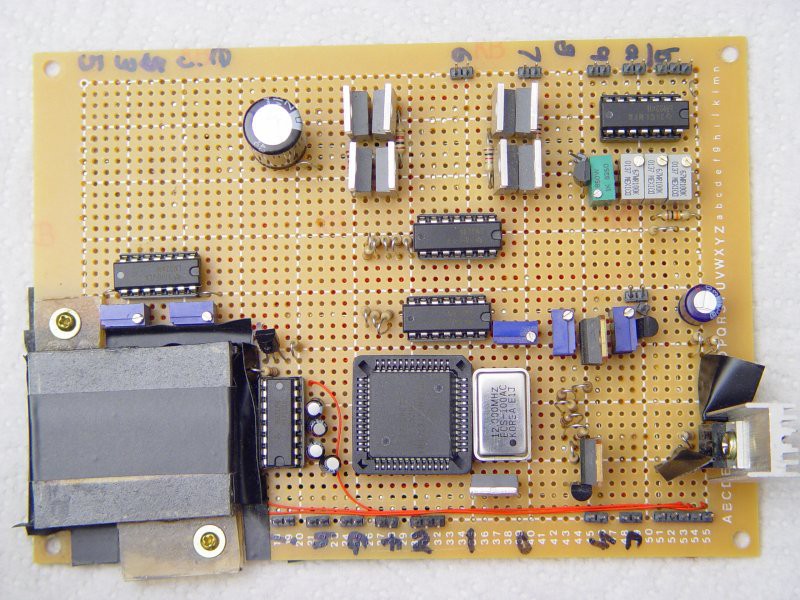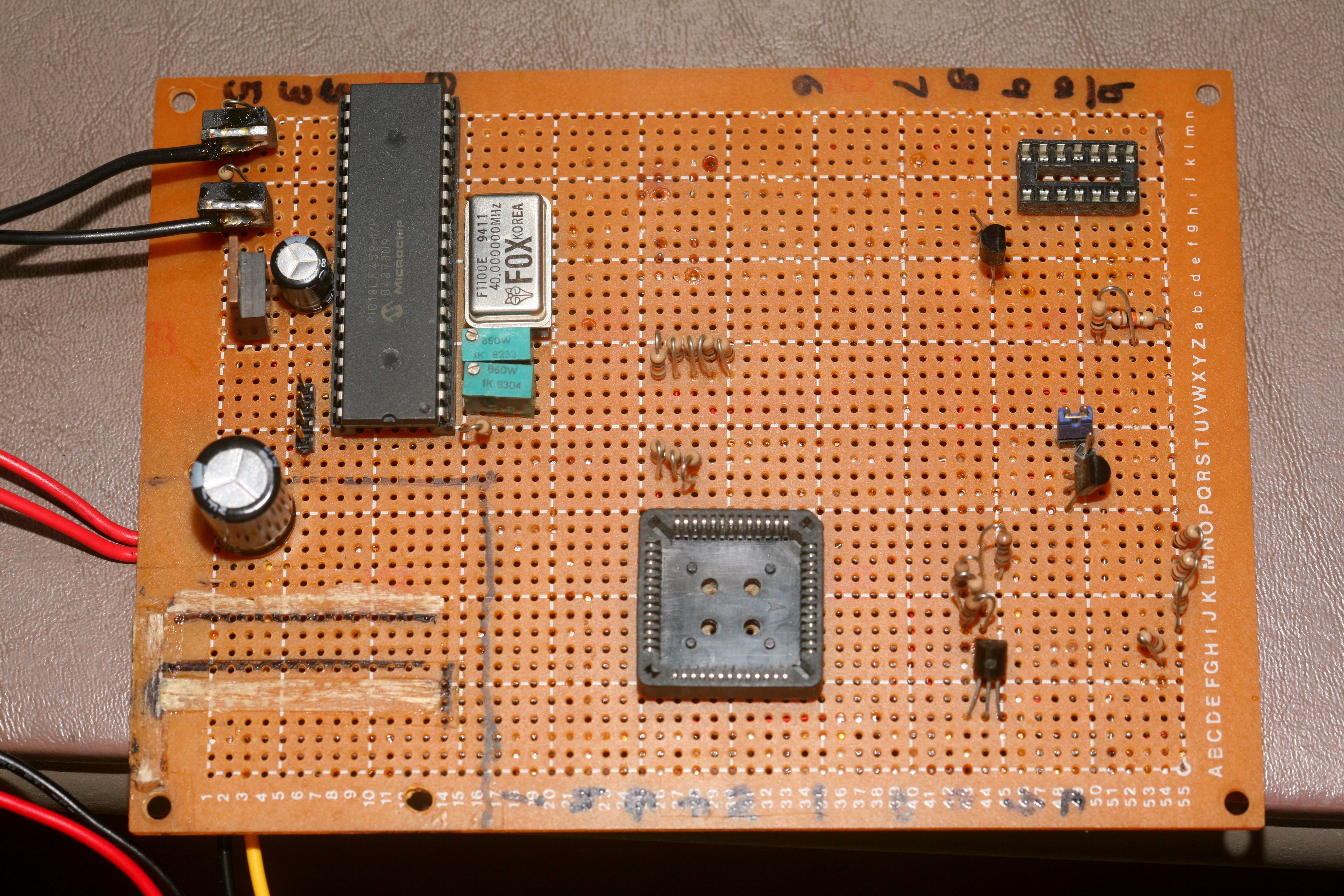Decided it would be easier to take another swing at repairing the vintage AT power supply than trying to hack a modern ATX supply. Quickly spotted a bodge wire melted onto a diode. The diode was shorted. 2 of these diodes rectify the output of the mane transformer, using a center tap. The component that blew was an FR302 diode. Replaced it with a 1N5400 & then a SN30SC4. Both worked without a load, but immediately blew after briefly lighting the LEDs. It pointed to a transformer winding that shorted under load & the short was on one side of the center tap, putting 120V across only 1 diode. That was all for the 20 year old supply. It was back to dropping laptop voltage with PWM.

Robot board from 2002

Converted into a PWM board, today
Recycling the very 3rd microprocessor board a lion ever built was a reminder of those days. The board seems to have changed color after 17 years. There was no oscilloscope, no USB, no current limited power, & no temperature controlled soldering iron. Instead of an FTDI chip, there was a MAX232 which plugged into a computer's 9 pin serial port. The attitude was don't build anything that would be cheaper to buy, which led to copying a schematic & hoping it would work. Without an oscilloscope, the 1st microcontroller board was abandoned.
Lions assumed microcontrollers only used the standard baud rates of personal computers when in fact it was an arbitrary number based on the clockspeed. Determining the baud rate was the 1st task in bringing up every later board.
The 68HC11 was the best microcontroller available. It was pathetic, but a friggin computer on a chip. Lions still recycle old microcontrollers, but not as primitive as the 68HC11. The 68HC11 actually had 4 more PWM outputs than the early PICs. It was programmed entirely through the serial port, which made the baud rate critical for getting anywhere with it.
The new dropper used an overkill microcontroller for 1khz PWM, but it's all about retiring these vintage microcontrollers. The LEDs got a lot hotter when pulsed at 1khz than when at DC. What used to run on 9V RMS now got hot at 2.5V RMS & appeared a lot dimmer. The dropper made a clear 1khz sound & the laptop brick got hot.
LED strips may still be too expensive to replace manes voltage floor lamps. Key changes with the giant square would be using interconnects instead of soldering the entire thin PWM is the accepted way of dimming LEDs, but it's obviously very inefficient.g in 1 piece & making the sides equal length. It would be much easier to erect if it used interconnects.
 lion mclionhead
lion mclionhead
Discussions
Become a Hackaday.io Member
Create an account to leave a comment. Already have an account? Log In.